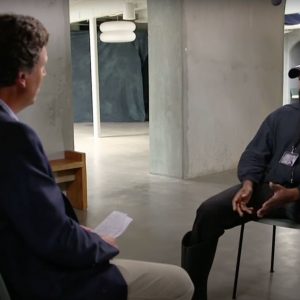Old Town Road was not born into a void. Lil Nas X’s genre-shattering fusion of trap and country influence was just one of the manifestations of the rising use of cowboy imagery and style on the internet and in popular culture outside of its traditional contexts. The name for this movement, coined by a pop culture archivist from Houston by the name of Bri Malandro, is the yeehaw agenda. While its influence has since expanded both in audience and in meaning to encompass the general contemporary use of cowboy imagery (think Kacey Musgraves, the #yeehawchallenge on TikTok, and the sudden explosion of girls wearing pink cowboy hats at parties), Malandro says when she “started using the term online it was just in celebration of fly Black girls in western looks.” Her Instagram account @theyeehawagenda serves as a living archive of images of Black artists dawning their country best, offering a compilation of photos predating the most recent trend as well as contemporary ones, including artists ranging from Rick James and Ray Charles to DaBaby and Lizzo.
It is worth noting that this is not the first time black artists have taken up the cowboy in rebellion. In the 1930s, in the midst of the Western film’s popularity, Black folks found themselves ostracized from these Hollywood productions. In response, actors like Herb Jeffries worked to create and popularize black-audience musical Westerns, featuring Jeffries himself as the first African American singing cowboy on screen. In more modern history, films like Unforgiven, Blazing Saddles, and Django Unchained in combination with scattered integration of Western influence into the wardrobes of famous black artists like Destiny’s Child and Lenni Kravitz, among others, have laid grounds for the present moment, which bears witness to this new wave of cowboy aesthetics.
Indeed, the origins of the yeehaw agenda are rooted in Black art both in terms of Malandro’s intention and in initiating the trend as it is seen today. Beyonce’s Daddy Lessons and Solange’s When I Get Home album call upon the sisters’ Texan roots while still more Black artists like Megan Thee Stallion and Lil Nas X continue to be at the forefront of this cultural phenomenon. This trend may seem more flashy and kitschy than meaningful, but I argue that when these artists use these symbols, it is deeply political and profound. The choice these artists are making is one that reclaims images understood as fundamentally American and simultaneously associated with white authority.
I use the word “reclaim” because although representations of cowboys and the West have often excluded Black folks, they were undeniable actors in that history. One in four cowboys during the late nineteenth century was Black, and some even say the word cowboy itself has its roots as a slur towards these Black laborers. There are also still Black cowboys (and girls) today. The Compton Cowboys, whose mission is “to combat negative stereotypes about African-Americans and the city of Compton through horseback riding,” offer one example. In this modern context, being a cowboy has served as a form of protest and protection, or as member Anthony Harris puts it: “they don’t pull us over or search us when we’re on the horses… They would have thought we were gangbangers and had guns or dope on us if we weren’t riding, but these horses protect us from all of that.” The Cowgirls of Color are also proof of the continuing legacy of the Black cowboy. As an all-female rodeo team founded in 2014, these women find pride in “defeating the stereotypical image of Black women,” and on the topic of the contemporary yeehaw agenda, team member Brittaney “Britt Brat” Logan says she is “boosted that Cardi B and (her collaborator) Lil Nas X are bringing exposure to something that’s been out here so long.”
This history and present reality has been whitewashed through cultural institutions like the aforementioned Western and the Dime novel which has, over time, worked to produce a public memory of a fictionalized West: one of tumbleweeds and white men on cowboys taking up a “vacant” land (their manifest destiny, of course) while simultaneously having to heroically fend off those who already lived there. This point raises a valid question: why do Black Americans want to be remembered as a part of this history? The answer, it seems, is more or less that’s not the point. In taking up these cultural symbols, the yeehaw agenda is tackling a broader erasure of Black presence and influence in American culture. The cowboy offers a cultural icon that represents a part of American history where Black folks existed but are not remembered. They are taking credit where it is due and situating themselves in a symbol that is unquestionably American, prompting the audience to reflect on standard conceptions of American identity, power, and freedom and where Black people belong within those narratives.
Featured Image Source: T. Walker for Ink Magazine






Comments are closed.